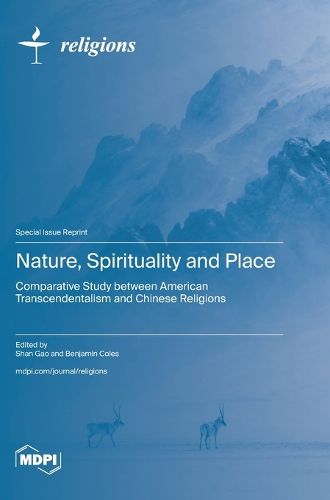Readings Newsletter
Become a Readings Member to make your shopping experience even easier.
Sign in or sign up for free!
You’re not far away from qualifying for FREE standard shipping within Australia
You’ve qualified for FREE standard shipping within Australia
The cart is loading…






This title is printed to order. This book may have been self-published. If so, we cannot guarantee the quality of the content. In the main most books will have gone through the editing process however some may not. We therefore suggest that you be aware of this before ordering this book. If in doubt check either the author or publisher’s details as we are unable to accept any returns unless they are faulty. Please contact us if you have any questions.
This Special Issue aims to explore how the concept of nature is interpreted in American transcendentalism and Chinese religions, and how these different interpretations have direct influence on the sense of place in America and China. It also aims to discover how the aesthetic appreciation of physical nature is deeply influenced by the metaphysical interpretation of the concept of nature. In terms of American transcendentalism, this Special Issue focuses more on Emerson's work since Emerson's aesthetic interpretation of nature has direct influence on Henry David Thoreau's life practices in wilderness. In Chinese religions, we put more emphasis on Daoism since the core value of nature in Daoism has deep influence on many aspects of Chinese culture, including architecture, art, music, language, and so on. This Special Issue adopts an interdisciplinary approach. The authors come from four disciplines which include religion, philosophy, literature, and architecture. This Special Issue will provide new insight to thinking about the relationship between human beings and nature in modern society. It can also deepen our understanding of self-identity and its relationship with the aesthetic appreciation of place, which include various landscapes such as wilderness, agricultural land. and mountains. It will be very helpful for scholars, students, and practitioners who are engaged in wilderness conservation, agricultural conservation, urban design, and nature aesthetics.
$9.00 standard shipping within Australia
FREE standard shipping within Australia for orders over $100.00
Express & International shipping calculated at checkout
This title is printed to order. This book may have been self-published. If so, we cannot guarantee the quality of the content. In the main most books will have gone through the editing process however some may not. We therefore suggest that you be aware of this before ordering this book. If in doubt check either the author or publisher’s details as we are unable to accept any returns unless they are faulty. Please contact us if you have any questions.
This Special Issue aims to explore how the concept of nature is interpreted in American transcendentalism and Chinese religions, and how these different interpretations have direct influence on the sense of place in America and China. It also aims to discover how the aesthetic appreciation of physical nature is deeply influenced by the metaphysical interpretation of the concept of nature. In terms of American transcendentalism, this Special Issue focuses more on Emerson's work since Emerson's aesthetic interpretation of nature has direct influence on Henry David Thoreau's life practices in wilderness. In Chinese religions, we put more emphasis on Daoism since the core value of nature in Daoism has deep influence on many aspects of Chinese culture, including architecture, art, music, language, and so on. This Special Issue adopts an interdisciplinary approach. The authors come from four disciplines which include religion, philosophy, literature, and architecture. This Special Issue will provide new insight to thinking about the relationship between human beings and nature in modern society. It can also deepen our understanding of self-identity and its relationship with the aesthetic appreciation of place, which include various landscapes such as wilderness, agricultural land. and mountains. It will be very helpful for scholars, students, and practitioners who are engaged in wilderness conservation, agricultural conservation, urban design, and nature aesthetics.